Coin Collecting 202: Introduction to Coin Grading
It was once said to become a good coin grader, you need a good light, a good magnifying glass, and twenty years of experience. So the first step is understanding what coin grading is and is not.
The best coin graders have been honing their skills over many years. The first step to becoming a good coin grader is to understand what coin grading is and some of the history behind it. Then you can purchase a good light and a good magnifying glass to start honing your coin grading skills.
What Is Coin Grading?
Coin grading describes the condition of your coin and is an essential aspect of coin collecting. The ability to accurately "grade" your coins is an important skill to develop. Unfortunately, coin grading is not a scientific process that can be applied by different people and receive identical results. It is subjective and goes back to the old adage, "Beauty is in the eye of the beholder." What one coin collector thinks is a beautiful coin may appear to another coin dealer as an unpleasant-looking coin; or vice versa.
Coin grading tries to move beyond the subjectiveness of beauty by coin collectors and coin dealers agreeing upon definitions of coin grading adjectives that describe the preservation level of a particular coin. In other words, we may describe a coin as "poor" if it is so worn that it is barely recognizable. On the other hand, we may describe a coin as "extremely fine" if it has very little wear on it and almost all of its design details are still intact.
The first person who tried to establish a consistent set of coin grading definitions was Dr. William Sheldon in 1949. He established a 70-point scale based on the value of a particular coin and date combination. Regrettably, the idea didn't take off, and people started using adjectives to describe the condition of a specific coin. At this point, much confusion reigned because what one person would term as "good" another person may view as "not so good."
Grading Uncirculated and Circulated Coins
For any particular series of coins, coin grading is divided into circulated and uncirculated (or mint state). The coin grade of a circulated coin is mostly based on its state of preservation. In other words, the more wear a coin has received, the less desirable it will be to coin collectors. This provides an easy way to establish a coin's value.
Although we would like to believe that all uncirculated coins would hold the same value, we know this is not true. Even uncirculated coins will exhibit different characteristics that make them more desirable to collectors. Some of the factors that affect the grade given to a coin include the following:
- Planchet : During the manufacturing process, there are many opportunities for a planchet to have quality issues or receive some damage while it is being handled and transported throughout the mint. Planchets that are undamaged and fall within the specifications for that particular coin are more desirable by coin collectors.
- Die : As a coin die is used to strike coins, it will wear and deteriorate like any other part that is used in a manufacturing process. Therefore, the first coin struck off of a fresh set of dies will be of the highest quality.
- Strike : During the minting process, the workers at the mint adjust the coining press to achieve an optimal strike. Too much pressure may bring up the finer details of the coin but will cause the coin die to wear out sooner. Too little pressure and the finer details of the coins will not be present, but the die will last longer.
The Coin Grading Scale
- (P-1) Poor - Barely identifiable and possibly damaged; must have a date and mintmark if used; otherwise, pretty thrashed.
- (FR-2) Fair - Worn almost smooth but lacking the damage a coin graded Poor usually has. Enough detail must remain to identify the coin.
- (G-4) Good - Heavily worn such that inscriptions merge into the rims in places; major features are mostly obliterated.
- (VG-8) Very Good - Very worn, but all major design elements are evident, albeit faint. Little, if any, central detail remains.
- (F-12) Fine - Very worn, but wear is even, and overall design elements stand out boldly. Almost fully-separated rims from the field.
- (VF-20) Very Fine - Moderately worn, with some finer details persisting. All letters of LIBERTY or the motto are readable. The rim's on both sides of the coin are full and separated from the field.
- (EF-40) Extremely Fine - Lightly worn; all devices are clear, and significant devices are bold. The finer details are bold and clear but may show some evidence of light wear.
- (AU-50) About Uncirculated - Slight traces of wear on high points of the coin's design; may have contact marks, and eye appeal should be acceptable.
- (AU-58) Very Choice About Uncirculated - Slightest hints of wear marks, no significant contact marks, almost full mint luster, and positive eye appeal.
- (MS-60) Mint State Basal - Strictly uncirculated; no evidence of wear on the highest points of the coin but an ugly coin with subdued luster, noticeable contact marks, hairlines, etc.
- (MS-63) Mint State Acceptable - Uncirculated, but with contact marks and nicks, slightly impaired luster, fundamentally appealing appearance. The strike is average to weak.
- (MS-65) Mint State Choice - Uncirculated with strong mint luster, very few contact marks, and excellent eye appeal. The strike is above average.
- (MS-68) Mint State Premium Quality - Uncirculated with perfect luster, no visible contact marks to the naked eye, exceptional eye appeal. The strike is sharp and attractive.
- (MS-69) Mint State Almost Perfect - Uncirculated with perfect luster, sharp and attractive strike, and very exceptional eye appeal. A perfect coin except for tiny flaws (only visible under 8x magnification) in planchet, strike, or contact marks.
- (MS-70) Mint State Perfect - The perfect coin. No microscopic flaws are visible under 8x magnification; the strike is sharp, and the coin is perfectly centered on a perfect planchet. Bright and complete, with original luster and outstanding eye appeal that is rarely seen on a coin.
Learning to Grade Coins
The best way to learn how to grade coins is to physically inspect coins with a grading expert. This is especially true for grading uncirculated coins. It is hard for a photograph or video to capture the true essence of an uncirculated coin. However, example coins may not be available for you to learn from. Additionally, a coin dealer may not have the time to spend with you. Therefore, you can start learning how to grade coins from other resources.
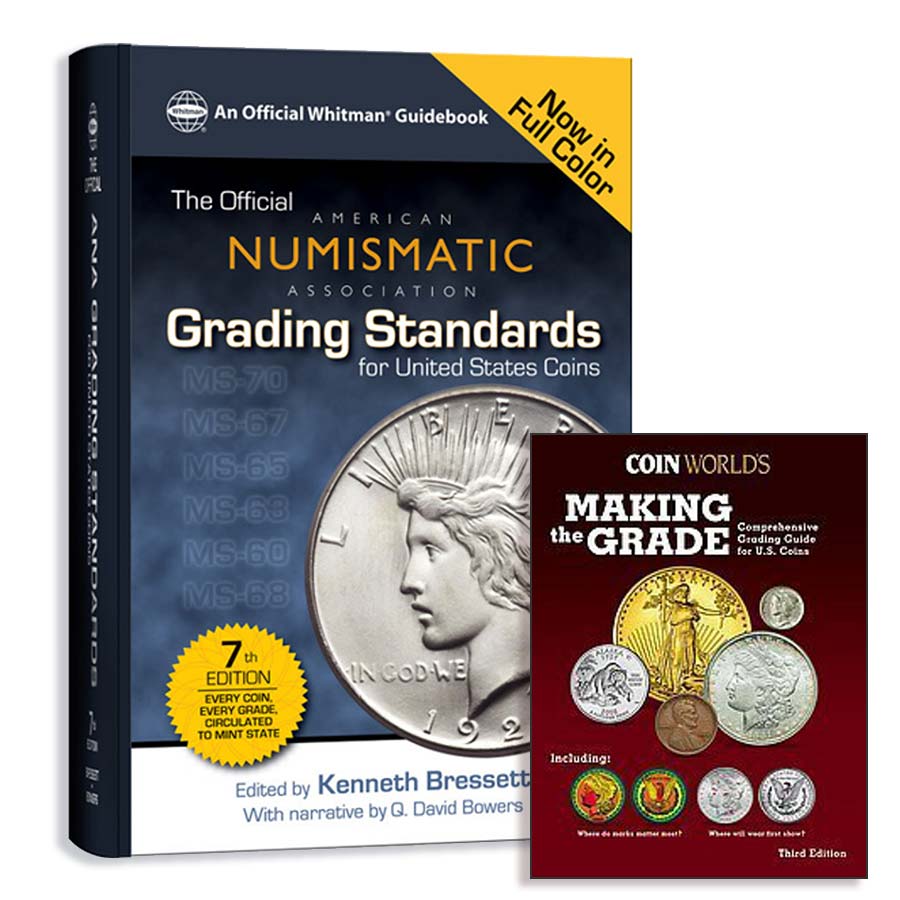
Popular reference books dedicated to the grading of U.S. coins.
Official ANA Grading Standards for United States Coins
This book was initially compiled by Abe Kosoff, with grading descriptions provided by Kenneth Bressett. This book resulted from a multiyear project to standardize grading terminology and characteristics. Virginia Culver, president of the American Numismatic Association at the time, championed the idea of creating grading standards. This book is in its seventh edition and is available through Whitman Publishing. The book features color photos and written descriptions
Product details
- Publisher: Whitman Publishing; Seventh Edition (August 13, 2013)
- Language: English
- Hardcover: 384 pages
- ISBN-10: 0794838243
- ISBN-13: 978-0794838249
- Item Weight: 2.24 pounds
- Dimensions: 7 x 1.2 x 9.1 inches
MAKING THE GRADE: Comprehensive Grading Guide for U.S. Coins
This book is published by Amos Hobby Publishing (the publisher of Coin World magazine). Beth Deisher is the author, with contributions from coin grading expert Michael Fahey. Like the ANA book, this book also features color photographs with detailed descriptions. The main differentiator from this book is that it provides color maps to help you understand the prime focal areas of the coin and discern the high points of the coin's design.
Product details
- Publisher: Amos Hobby Publishing; 3rd edition (August 10, 2012)
- Language: English
- Paperback: 304 pages
- ISBN-10: 0944945635
- ISBN-13: 978-0944945636
- Item Weight: 2.45 pounds
- Dimensions: 10 x 1 x 12.5 inches
Professional Coin Grading Service (PCGS)
PCGS Photograde™ Online provides one of the best collections of coin grading images online. For each grade, a sample coin photo is presented. Clicking on the coin will open up a high-definition image of the coin. By clicking on the magnifying glass symbol in the upper right-hand corner, you can zoom in to see the fine details of the coin. However, it does not provide a written description of each grade.
Numismatic Guaranty Corporation (NGC)
Another online resource for coin grading is the NGC Coin Grading Guide website. While this resource provides an image of an uncirculated coin, it lacks examples of each grade for the coin. However, it does provide background information and commentary on subtypes and varieties.

Download the Greysheet app for access to pricing, news, events and your subscriptions.
Subscribe Now.
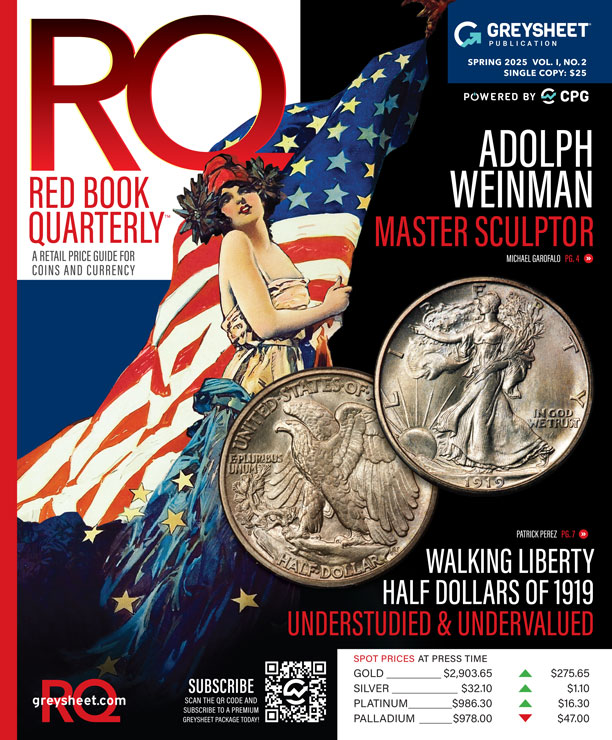
Subscribe to RQ Red Book Quarterly for the industry's most respected pricing and to read more articles just like this.
Author: James M Bucki
Related Stories (powered by Greysheet News)
View all news
A die variety occurs when there is an intentional or unintentional change or variation to the design on the coin die.
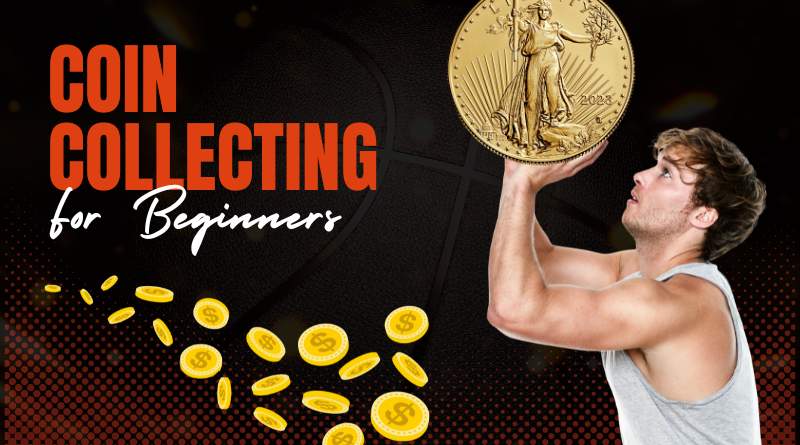
There are many reasons people start collecting coins: for fun, profit, even investment. It's best to learn the basics before you jump in too quickly.
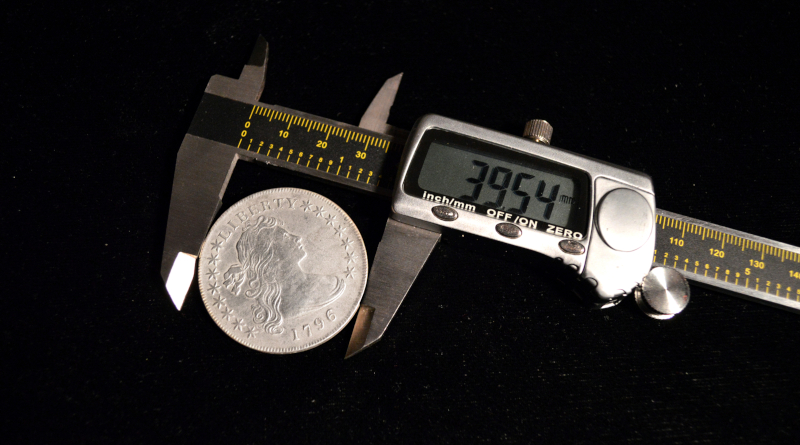
Detecting counterfeit coins is a science that requires skill and experience to perfect.


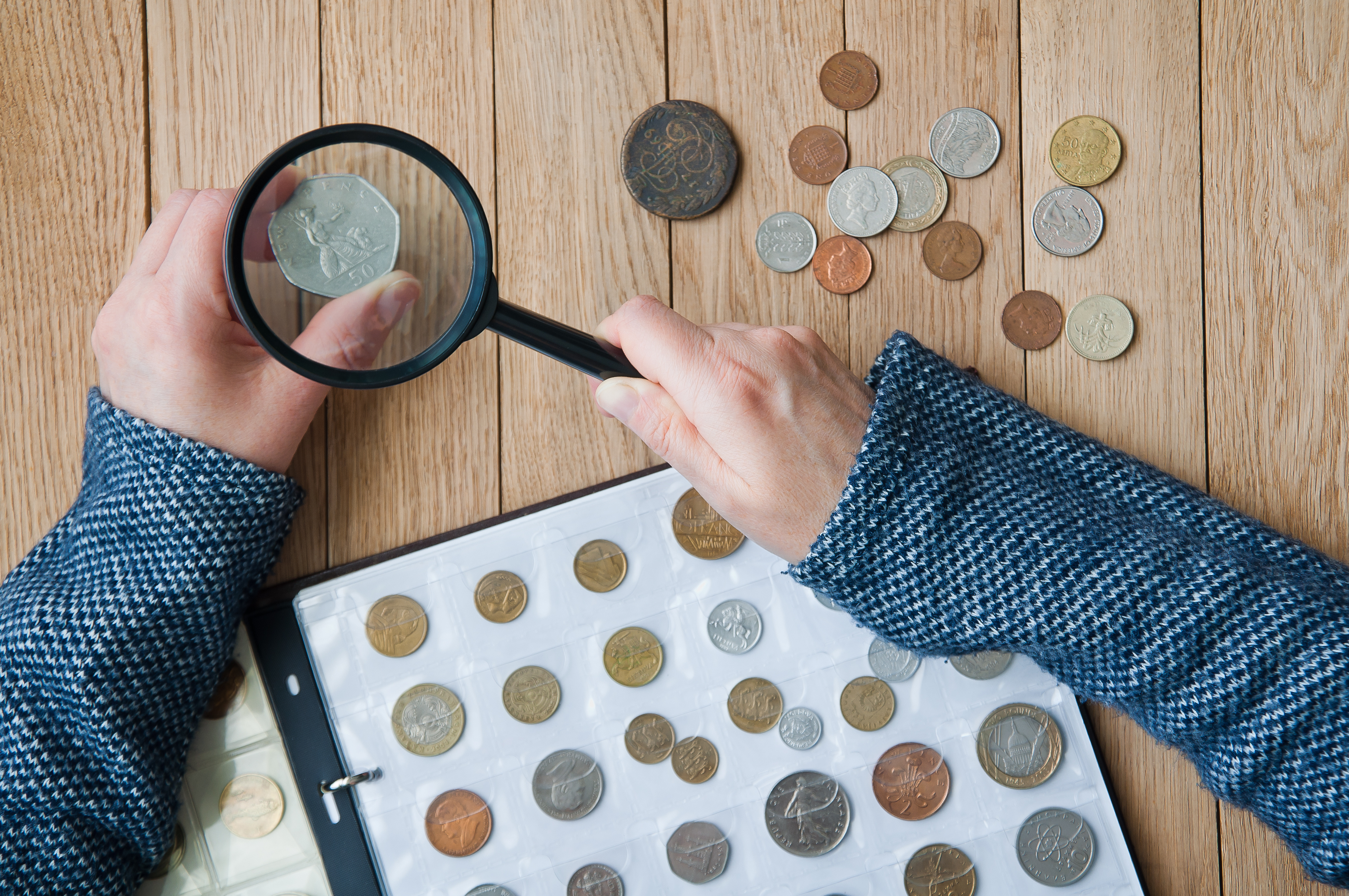






Please sign in or register to leave a comment.
Your identity will be restricted to first name/last initial, or a user ID you create.
Comment
Comments